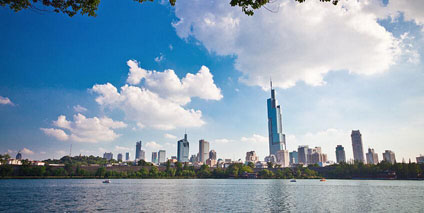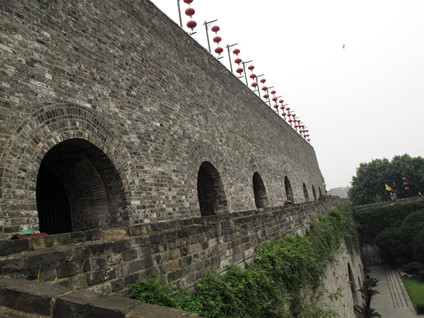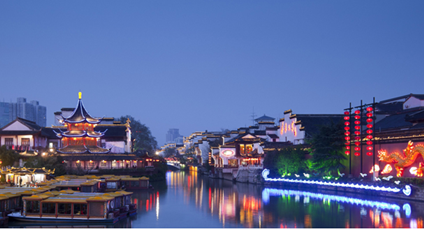

|
Nanjing |
Nanjing is the capital of Jiangsu Province in eastern China. The famous Yangtze River flows through the city and the estuary is not far away. Nanjing enjoys a civilization of over 6000 years and the city itself was founded 2500 years ago. Enclosed by mountains and rivers, and located in a strategic place, it boasts picturesque scenery that blends natural landscape with towering modern buildings and integrating traditional styles with modern civilization. Thus, Nanjing was known as a unique historic and cultural city to the world, and also an important center for commerce and trade in Eastern China. 
For more tour information about Nanjing, please visit the following links: A Brief History Nanjing, also called “Ning” for short, is located in the Yangtze River Delta. With history of over 6,000 years, Nanjing has become a famous historical and cultural city since it was established 2,500 years ago. Since the 3rd Century AD, 10 dynasties and regimes made Nanjing the capital and established the countries including Wu, Eastern Jin, Southern Dynasties (Sung, Qi, Liang, Chen), Southern Tang, Ming, Taiping Heavenly Kingdom, and the Republic of China. Hence Nanjing obtains the titles “Ancient Capital for Six Dynasties” and “Capital City for Ten Dynasties”. |

|
| Climate The city enjoys four seasons including a monsoon period every year. Nanjing is frost-free about 237 days out of the year and has an average annual temperature of 16 degrees Celsius. Population Nanjing is the capital of Jiangsu Province with the total area of 6598 square kilometers, including 4728 square kilometers as urban area. Until 2016, the total population of Nanjing is over 30 million. |
| Cultural and Historical Sites Nanjing is a magical city with both modern and ancient features. It served as the capital for six ancient dynasties, and harbors some glorious remnants of times gone by. History has left the place numerous historical sites and heritage relics which now constitute the main attractions. The most popular tourist scenes in Nanjing include the Sun Yat-sen Mausoleum, the Ming Tombs, Memorial Hall to the Victims in the Nanjing Massacre, the City Wall of Nanjing, and so on. |

|
| Tourist Scenes Known as the capital city of six dynasties in ancient Chinese history, Nanjing has a brilliant cultural heritage including mausoleums, temples, museums, classical gardens and many other historical and cultural sites. The most famous are Xuan Wu Park, the Purple Mountain, and the Jiming Temple. In addition, the Qin Huai River is a beautiful destination as well as Confucius Temple, and The Gate of China (a.k.a. Zhonghuamen). |

|
| Shopping Xinjiekou is the main shopping district in the city center. You can find most of the top local, regional, national, and international brands here. Hunan Road is similar to Xinjiekou but with a smaller scale. Finally, be sure to go shopping around the Confucius Temple market where you can find delightful clothing and artisanal items. Aqua City Shopping Center near Confucius Temple has many western brands and goods. Food Nanjing food is a smooth combination of regional and local flavors. Traditional Nanjing style is called Jiangsu cuisine based on the name of the province and is known for its original flavor and raw ingredients. Some of the best places to try typical Jiangsu food are around Qinghuai River and Hunan Road. There are countless street stalls that offer local favorites such as duck blood vermicelli, baozi (steamed buns stuffed with pork), roast beef, salty duck, animal stomach, chicken feet (also known as phoenix feet), xiaolongbao (delicate dumplings filled with soup and meat), tangbao (similar dumplings with crab meat and soup), and much more. |

|